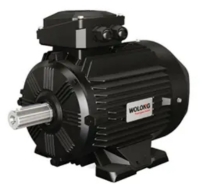Three phase asynchronous Electric motors play a crucial role in a myriad of machinery and equipment, transforming electrical energy into mechanical energy to perform work. The efficiency and efficacy of a motor are predominantly determined by its operational system, which refers to the motor’s operating conditions. Two prevalent operational systems are S1 (continuous operation) and S3 (intermittent cycle operation). Grasping these systems is essential for choosing the appropriate motor tailored to a particular application.
S1 working system: continuous operation
S1 working system is also called continuous working system, which is characterized by the motor running uninterrupted for a long time under constant load. This system is ideal for applications requiring consistent and reliable performance, such as conveyors, pumps and fans. In S1 operation, the motor is designed to handle the thermal load generated during continuous use, ensuring it does not overheat and maintains optimal performance over time.
S3 working system: intermittent cycle operation
In contrast, the S3 operating system, or intermittent cycle operating system, involves cycling the motor on and off. This system is suitable for applications where the motor does not need to run continuously but rather in bursts, such as elevators or certain types of machinery. The S3 system allows for periods of rest, which helps manage heat generation and extend the life of the motor. However, it requires careful consideration of the duty cycle, which is the ratio of operating time to total cycle time.
Main Differences between S1 and S3
The main difference between S1 and S3 work systems is how they operate. The S1 is designed for continuous, uninterrupted use, while the S3 is suitable for intermittent operation for defined periods of time. When selecting a motor, understanding these operating systems is critical to ensuring that the motor can meet the specific requirements of the application, ultimately increasing efficiency and longevity.
Post time: Nov-05-2024


